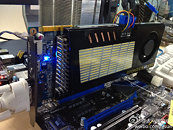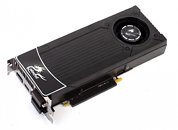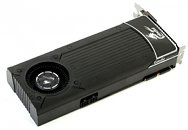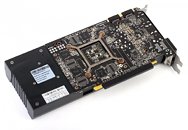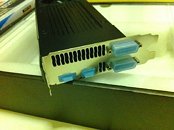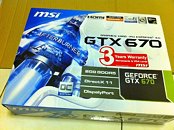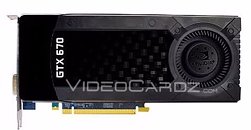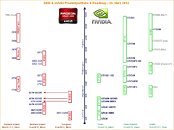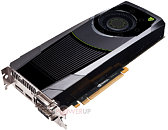
Galaxy Readies Single-Slot GeForce GTX 670
A little later this week, NVIDIA will launch its third SKU based on the GK104 silicon, targeting key performance-segment price points, the GeForce GTX 670. It is possible that NVIDIA will allow AIC partners to come up with custom-designs from day one. One such designs is Galaxy's, which needs no more than one expansion slot in your system. Galaxy's single-slot GeForce GTX 670 appears to use an NVIDIA reference-design PCB, albeit in its signature shade of blue. One could tell so, with the VRM area appeared to be located towards the front, and the PCB appearing to be cutting off at two-thirds the length of the card (where the PCIe power connectors are located).
The extra length of the card is productively used to position a lateral-flow fan. Since there is no PCB, the fan compartment is more roomy, which could mean a bigger fan, with the possibility of intakes on the reverse side of the card. This could result is a slower, quieter cooler. The fan guides air through an aluminum channel stack, with some of the channels being made of copper. It's likely that Galaxy is using a vapor-chamber plate to transfer heat from key components over to the air channels. The portion of the heatsink over the VRM MOSFETs has cylindrical structures, which reminds us of Radeon HD 4850 VRM area.
The extra length of the card is productively used to position a lateral-flow fan. Since there is no PCB, the fan compartment is more roomy, which could mean a bigger fan, with the possibility of intakes on the reverse side of the card. This could result is a slower, quieter cooler. The fan guides air through an aluminum channel stack, with some of the channels being made of copper. It's likely that Galaxy is using a vapor-chamber plate to transfer heat from key components over to the air channels. The portion of the heatsink over the VRM MOSFETs has cylindrical structures, which reminds us of Radeon HD 4850 VRM area.
